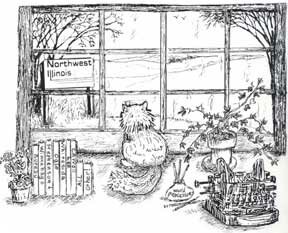
Discover rewarding casino experiences. 
Click on the Flag for More Information |
Each group of immigrants mostly paid orderly allegiance to their homelands by building barns such as they’d had back home and were labeled such by their major points which over the centuries have melded into wonderful varieties. Just as in their Homelands early settlers sometimes lived in the barn with the livestock, while in the Old Country this was planned for and the residence was quite permanent. Here in North America barn/home was temporary although as early as 1643 there is record of a barn to be built 120 feet long by 28 feet wide with forty feet of the length for a dwelling and the rest for “laborers, cattle, horses and to be thatched with reed.” In America where timber was so plentiful, log cabins could go up in days and separate from a barn which may have been a resort apart. In searching for material for this, a detail was discovered which hadn’t ever been read before, have you? The log cabin wasn’t replaced by clapboard, stone or brick until seven harvests had been gathered ... (Or nine in some neighborhoods). That may have been a flexible rule.
Although there naturally were differences in Old and New Country barns, the basic plan in both places “owed its form to the terrain.” The barns in mountainous Europe were built at right angles to the lay of the hill while in the New World, barns from the beginning were built parallel to the slope Authors Eric Arthus and Dudley Witney whose detailed book concerning the barns contribution to history, speculated that here in the New World the barn as residence was “abandoned for several reasons, the chief one being the heat from the animals in the American summer.” In the colder Europe/Britain that was a plus. Too, there was more danger of a fire here in New Country which would take both barn and house if combined ... Here the plentiful timbers were used for heating and cooking which wood fire was a hot, hot blaze with flame and spark. The Old World hearth fire was peat which merely smoldered, not endangering the structure.
The steadily disappearing barns throughout today are another erosion of our past, our traditions. A very few barns have been converted into houses. Some houses use a barn-like plan which is appealing (and roomy). We still see a few also with “pure” style but most have evolved into a variety of personalities ... With varying roof styles, cupolas, cantilevered forebays, doors on the “wrong sides,” even one decorated with palm trees and recently a lighthouse, too. Some are dated. Enjoy them while you can! Once threshing was done in the barn, first with flails, then cumbersome machines until it moved outside, on wheels. Oh, my, who'd have thought the barn would become passé? Barns are razed as a common thing once they've disintigrated beyond their familiar silhouettes. It's costly to tear them down and so is preserving them and maintaining them. Their stately character gave importance to the farmyard. The dignity of the interior was beyond having just a glance. It's complex simplicity was to be a long-held source of rightful pride. Each barn was different from the other ... Roof style, cupola or not, glass windows replaced shutters. They weren't/aren't the spiritless sameness of today's metal shed! Please appreciate those around us still. A few are pictured here and next week.
|
|||||||||||||











